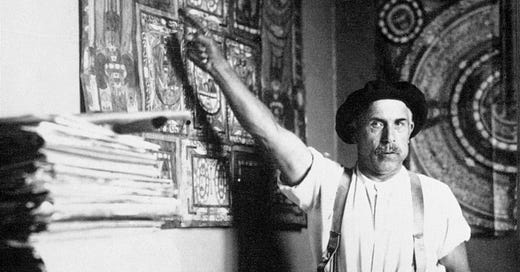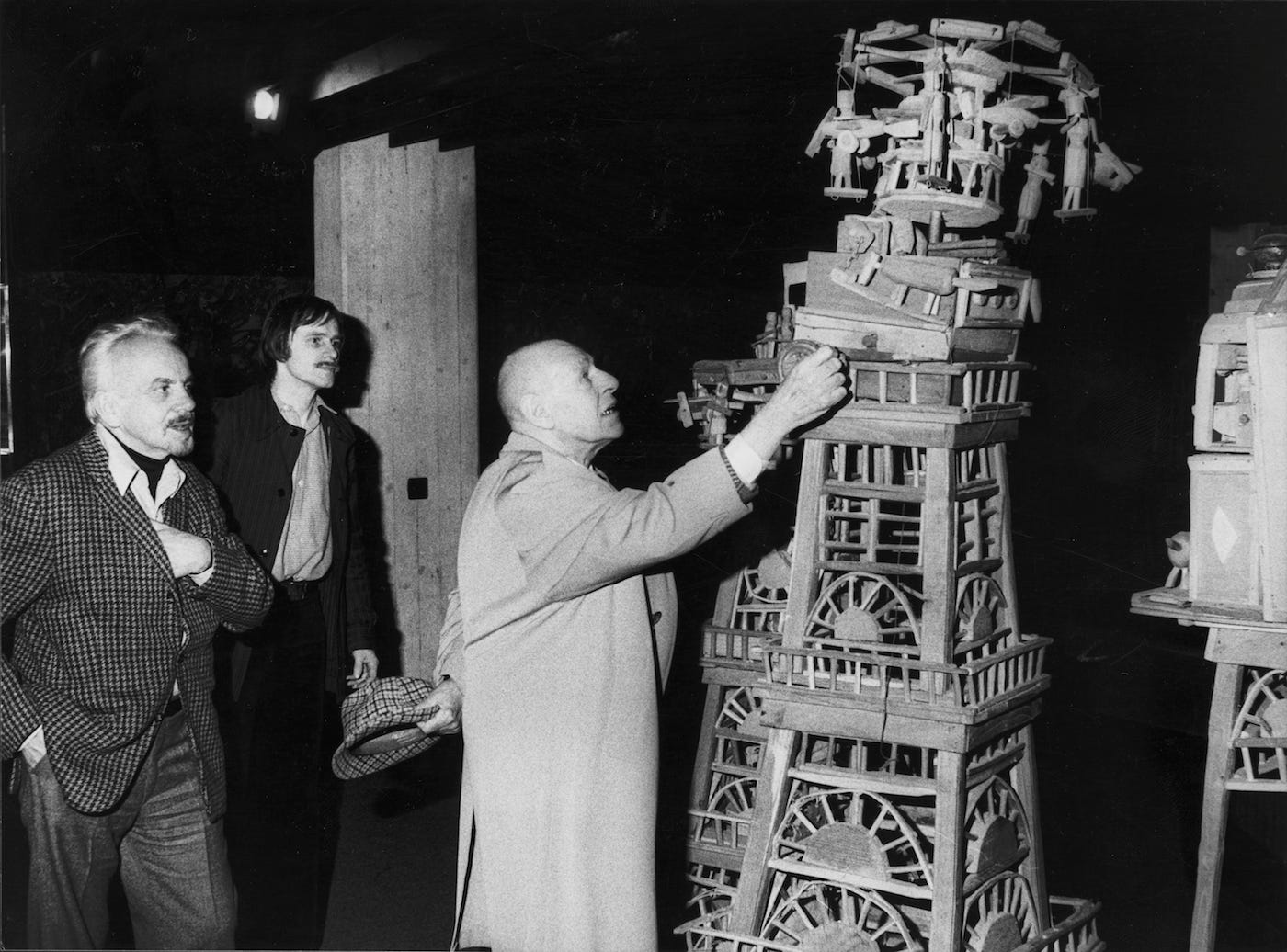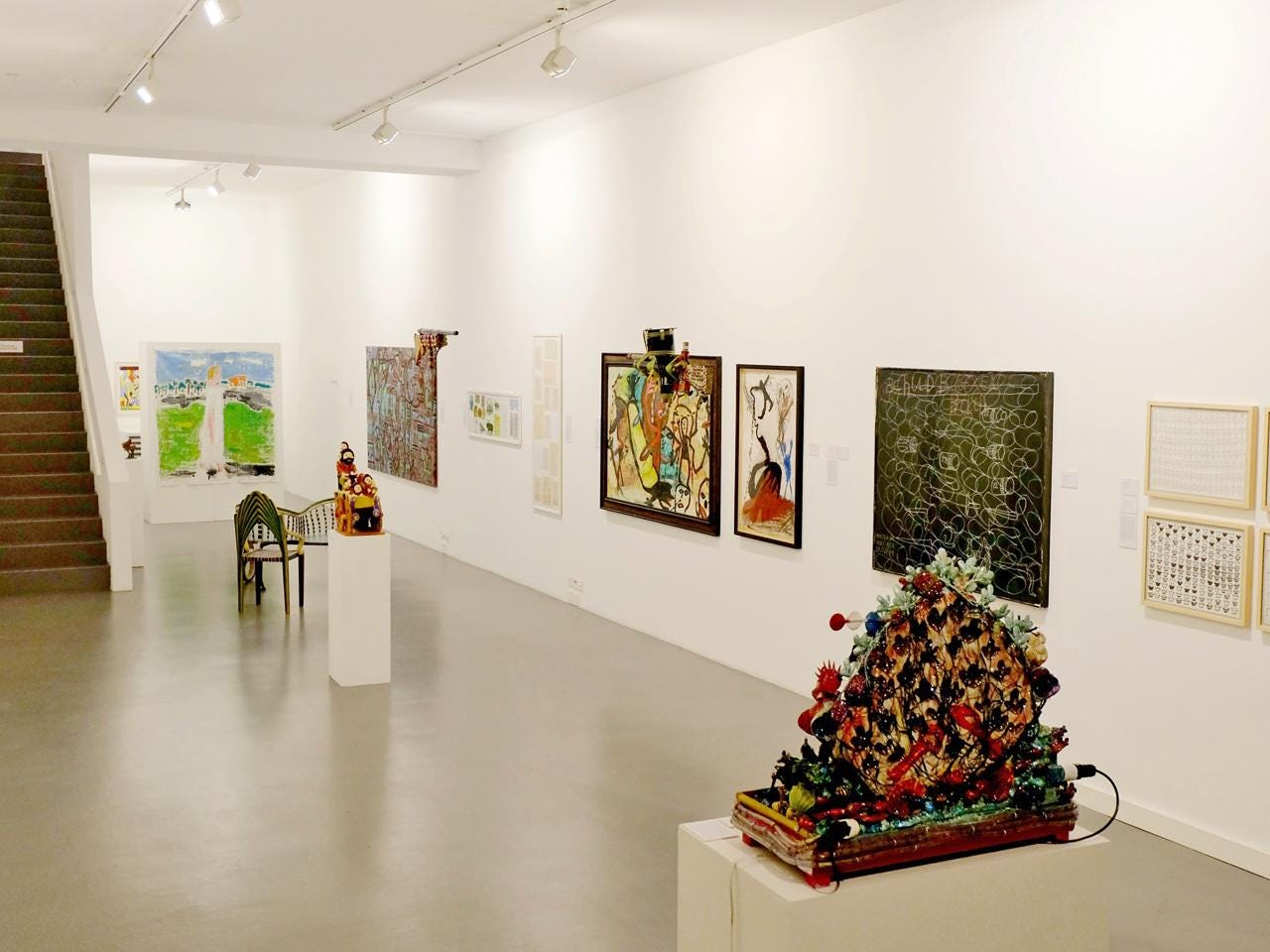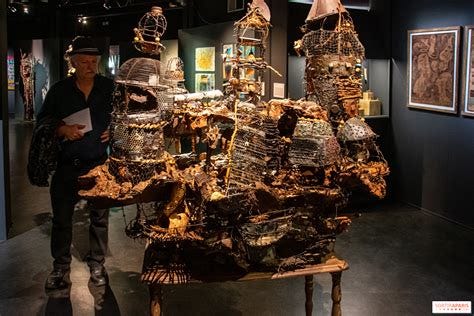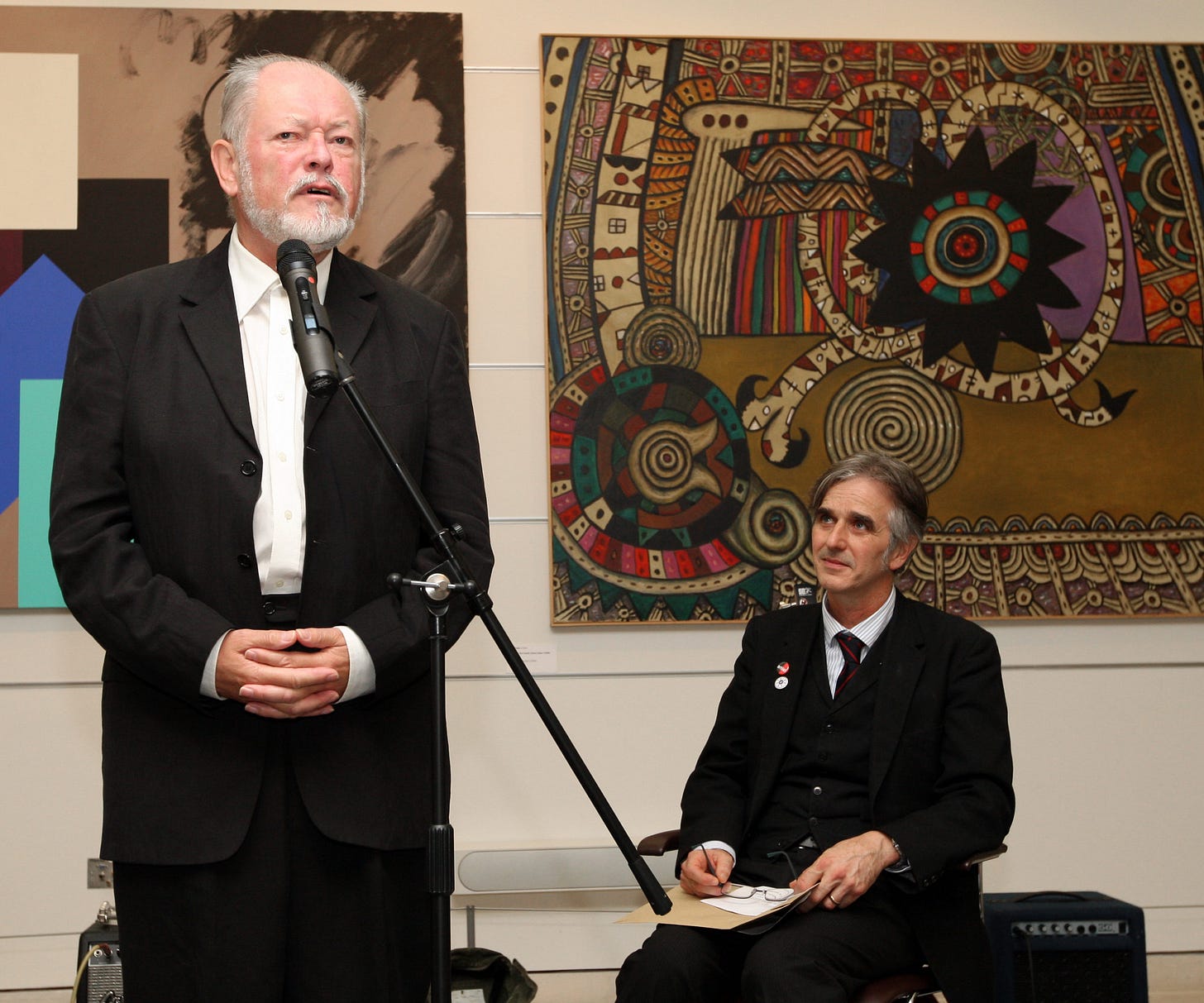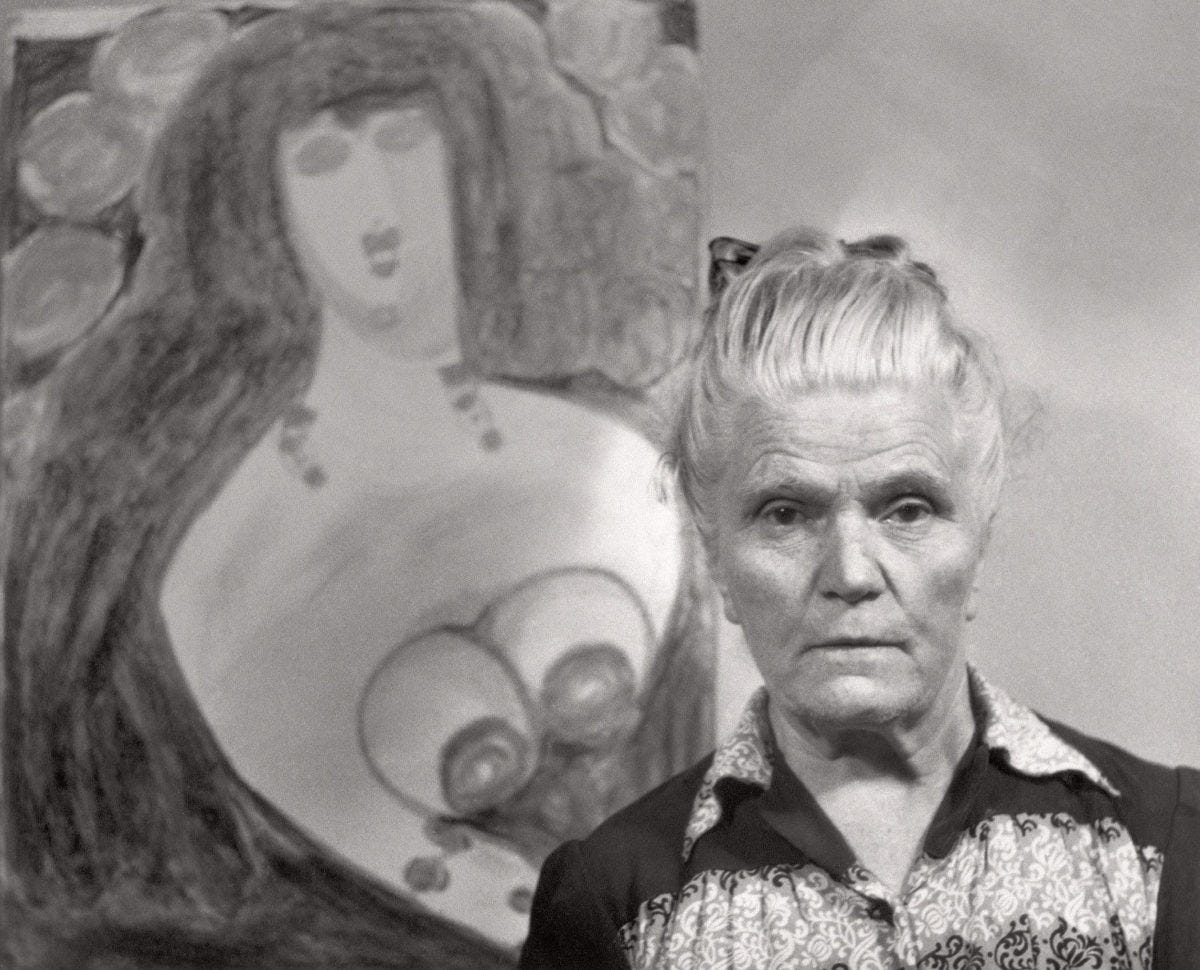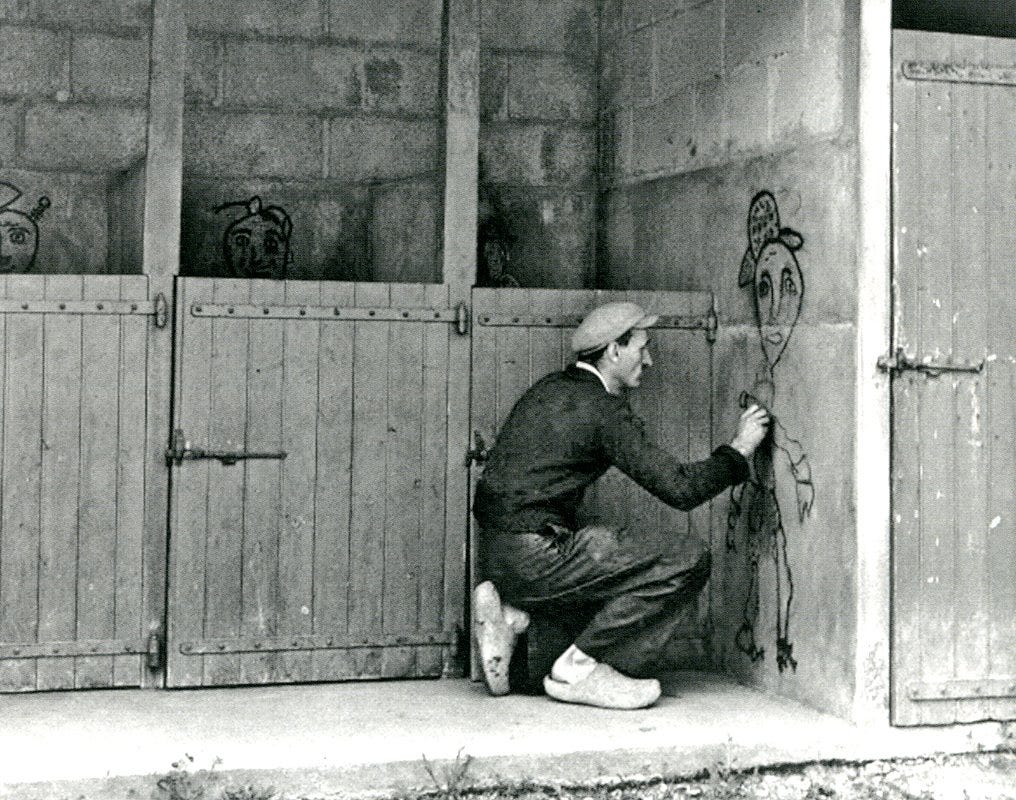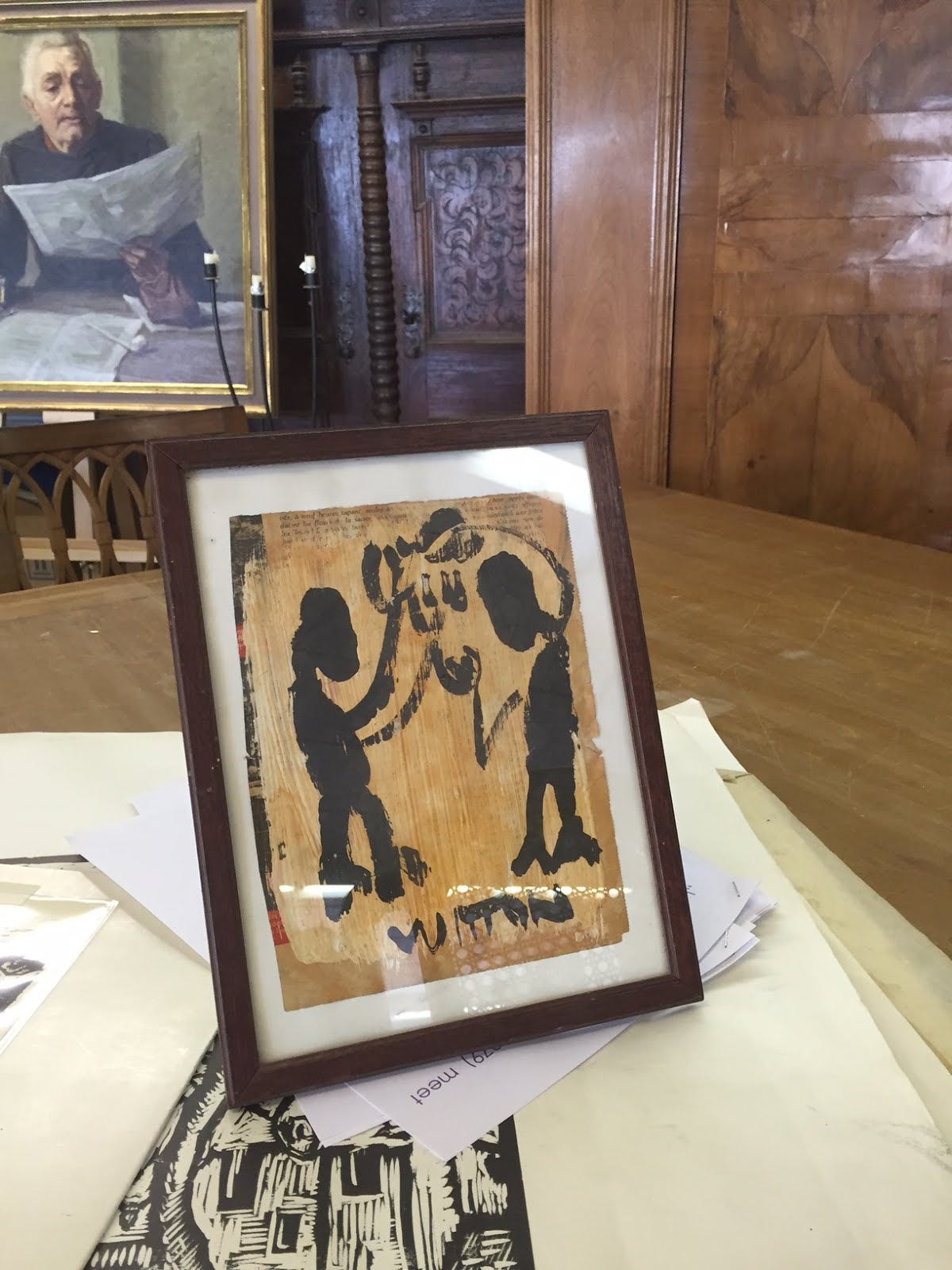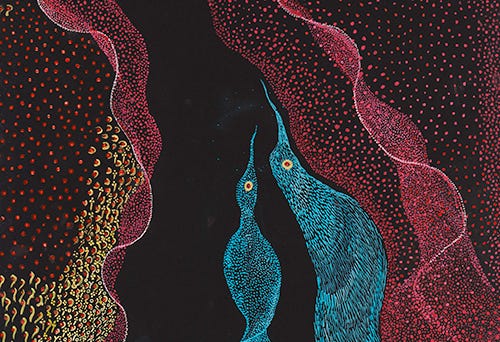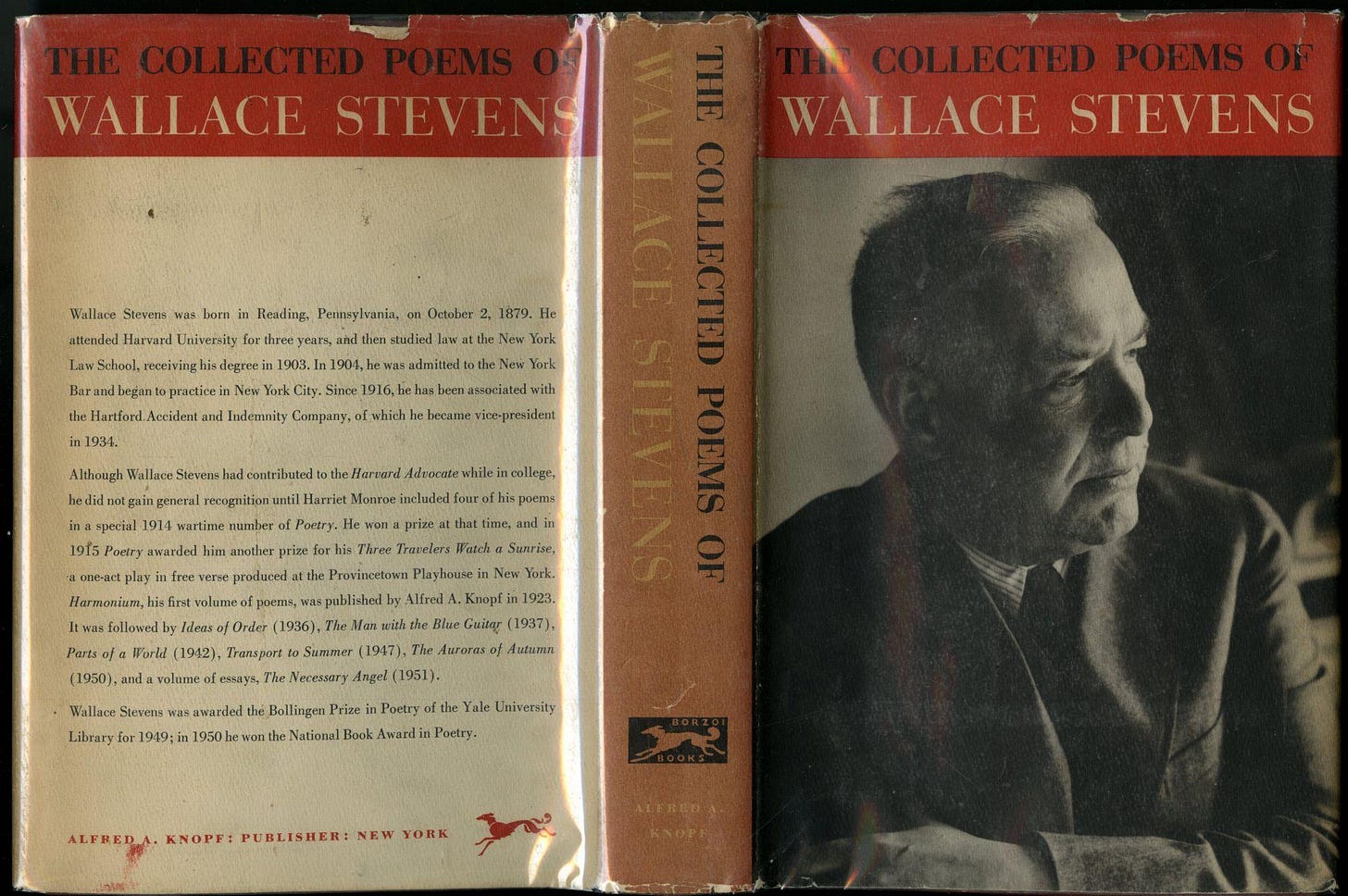Art Brut arose from a need for radical subjectivity.
Shaped by outsiders with no academic aspirations and reinforced by a freely curated framework, artists like Wölfli, Corbaz, and Herrera rejected societal norms and revealed an independent realm of experience.
Their art lives on today, through inclusive forces and the continued relevance of a nonconformist visual language.
In 1945, Jean Dubuffet coined the term Art Brut (“raw, untreated art”) to describe a form of art that deliberately stood apart from conventional artistic traditions. Art Brut is created by autodidacts, prisoners, psychiatric patients, children, or individuals with cognitive impairments, entirely outside of classical art systems.
Self-instruction and independence from prevailing trends or fixed artistic dogmas were to become a driving internal force, a source of motivation rather than a pursuit of recognition.
Unconventional materials and techniques were often employed, promising the highest degrees of authenticity and originality.
Starting in the 1940s, Dubuffet collected works by marginalized creators as a form of pure, uncensored art.
In 1948, he founded the “Compagnie de l’Art Brut” and later opened a museum in Lausanne. His aim was to present art that was free from cultural conditioning and reflective of primal psychic energy.
Art Brut is often referred to in English as “Outsider Art”, a term introduced by Roger Cardinal in 1972. Dubuffet himself did not intend “outsider” to be exclusionary, but rather envisioned it as a form of counter-culture within the art world. Though somewhat ambiguous, the term still demands that we follow the art itself.
Key Figures:
Adolf Wölfli (1864–1930)
Psychiatric patient, self-taught draftsman and composer
Monumental, densely detailed works like “The Entire Year”
No clear mentor, though Dubuffet made his work known
Created spiritually charged, mytho-poetic imagined worlds
Aloïse Corbaz (1886–1964)
Swiss woman institutionalized in a psychiatric clinic, created opulent fantasy visions
Inspired by erotic dreams of imperial court life, used vibrant materials
Discovered by Dubuffet in 1947—one of the most important female Art Brut artists
Gaston Chaissac (1910–1964)
Self-taught, influenced by close contact with Otto Freundlich and Jeanne Kosnick-Kloss
Artistically networked since the 1930s; bridged Art Brut and “New Invention”
Influenced Dubuffet; introduced new color segments—blending poetry and modernity
Pierre Vuitton (1880–1962)
PPsychologically affected and traumatized by war, self-taught practice
Close relationships with Dubuffet, Cocteau, Picasso, and de Chirico
Used atypical materials like newspaper, known for “Time Devil” sessions
Magali Herrera (1914–1992)
Self-guided Uruguayan artist, active from ~1965, inspired by intense depression
Created utopian visions; her meeting with Dubuffet brought international recognition
Posthumous influence on contemporary collections and exhibitions
Compagnie de l’Art Brut:
Dubuffet’s collective of artists, widely networked with intellectuals like Wallace Stevens.
Therapeutic and communal settings (e.g. Saint-Alban, with Dr. Francesc Tosquelles) supported art as a form of therapeutic expression.
Art Brut evolved further through the establishment of institutions (e.g. Lausanne) and gained international recognition into the 21st century.
Happily, some paths of insight continue to show their effects today.
Participatory art organizations like Arts Project Australia carry on the Art Brut tradition by supporting artists with learning disabilities.
Moreover, so-called “Outsider Art” remains an integral part of both street art and art therapy today.
In the art market, as well as in exhibitions, collections, and museums, Art Brut has become part of the established system, alongside movements like Surrealism or Dada.
Yet it is precisely this delicate framework that also calls for criticism of the commercialization of this form of art, a tension between authenticity and market orientation.
Art Brut provides a powerful counterpoint in debates on elitist art as tradition-driven formulation. Its ethos, that art emerges from immediate inner truth and improvised interpretation, continues to influence the viewer's experience of contemporary genius.
Installations, graffiti, street art, and conceptual art are merely associations of our time, not outcomes of structured progression. The ability to express through an independent language links the spirit of the present to cultural expression.
KB
Sources
Art brut – Wikipedia artinwords.dereddit.com+6barbican.org.uk+6art4you.gallery+6artmatcher.comblog.artsper.com+2art4you.gallery+2newyorker.com+2en.wikipedia.org+15britannica.com+15barbican.org.uk+15en.wikipedia.orgen.wikipedia.org+1theartstory.org+1en.wikipedia.orgft.comtheaustralian.com.au
Outsider art – Wikipedia
Art Brut – Tate
Collection de l’Art Brut – Wikipedia zenmuseum.com+15artinwords.de+15barbican.org.uk+15
New Yorker: Outside In … theaustralian.com.au+4newyorker.com+4theguardian.com+4
FT: Psychiatry and Art at Saint‑Alban ft.com
Wikipedia: Pierre Vuitton en.wikipedia.org
Wikipedia: Juliette Élisa Bataille zenmuseum.com+2en.wikipedia.org+2artuk.org+2
Wikipedia: Aloïse Corbaz theguardian.com+6en.wikipedia.org+6zenmuseum.com+6
Wikipedia: Gaston Chaissac artinwords.de+3en.wikipedia.org+3art4you.gallery+3
Guardian: Outsider Art integration en.wikipedia.org+15theguardian.com+15theaustralian.com.au+15
APA (Arts Project Australia) article newyorker.com+5theaustralian.com.au+5artinwords.de+5


